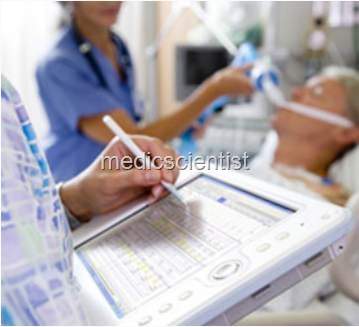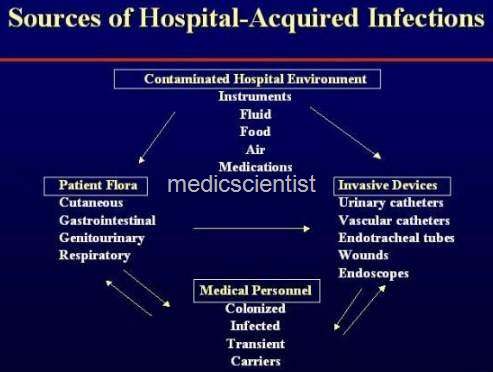Article Contents ::
- 1 Hospital Acquired Infections Causes and Prevention –
- 2 Hospital Acquired Infections Defenition —
- 3 Causes of Hospital Acquired Infections
- 4 Prevention of HAl [Hospital Acquired Infections]
- 5 NOSOCOMIAL INFECTIONS Urinary Tract Infections:
- 6 Hospital Acquired Infections Pneumonia:
- 7 Infections due to Vascular access and Monitoring:
Hospital Acquired Infections Causes and Prevention –
About 5-10% of patients develop HAl Hospital Acquired Infections or nosocomial infections. Hospital acquired infections are difficult to treat,cause epidemic problems, costly, have high morbidity, are preventable., There is a high incidence of nosocomial infections in patients on ventilators.
 |
| Hospital Acquired Infections Causes and Prevention |
Hospital Acquired Infections Defenition —
- Hospital acquired infection (HAl) is defined as infection which occurs after admission and which was not incubating at the time of admission.
- Hospital acquired infections are difficult to treat, costly, have high morbidity, cause epidemic problems, are preventable.
- About 5-10% of patients develop HAl or nosocomial infections. There is a high incidence of nosocomial infections in patients on ventilators.
 |
| Sources of Hospital Acquired Infections |
Causes of Hospital Acquired Infections
- · Immunocompromised patients
- · Antibiotic resistant bacteria
- · Fungal and viral super infections
- · Invasive devices
- · Invasive procedures.
| How to Prevention of Hospital Acquired Infections |
Prevention of HAl [Hospital Acquired Infections]
- Hand hygiene Isolation precautions Training of personnel
- Invasive devices only when needed Invasive devices removed when not needed Antimicrobials – Restricted use
- Only specific appropriate antibiotic given Antibiotic discontinued timely
- Control of tuberculosis
- Study of hospital blood borne pathogens Infected patients segregated
- Surgical wounds discussed with experts.
NOSOCOMIAL INFECTIONS Urinary Tract Infections:
- · Prevention – Catheters used when necessary.
- · Aseptic techniques for catheter insertion.
- · Remove catheters as soon as possible.
- · Common organisms are E.coli, candida, enterococci, gram negative bacilli, Staph aureus.
Hospital Acquired Infections Pneumonia:
- · Occurs due to aspiration.
- · Organisms are Strepto pneumoniae, Staph aureus, Hemophilus, Enterobacter, Pseudomonas aeruginosa, Klebsiella pneumoniae.
- · Prevention – prevent aspiration.
- · Aseptic care of nebulizers, breathing circuit.
- · Aseptic suctioning, systemic antibiotics.
| Antibiotic therapy of Hospital Acquired Infections |
Infections due to Vascular access and Monitoring:
- · Prevention – Maximum sterile barrier precautions during insertion.
- · Avoid femoral site for catheterization.
- · Move the peripheral catheters to new sites every 72 hours.
- · Transparent dressings.
- · Organisms are – Staph aureus, Enterococci,
- Gram negative bacilli, Candida.
Infections due to Legionella :
- Legionella pneumonia is due to contamination of potable water especially in immunocompromized patients.

